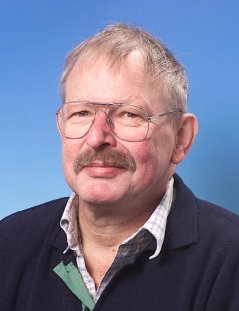
News
Fred Gommers (1942-2020)
Fred Gommers passed away on 8 December 2020 in nursing home De Rijnhof, Renkum, The Netherlands, due to COVID-19-related complications. He was born on 19 February 1942, in Heumen, The Netherlands. He obtained his M.Sc. degree at Wageningen University and continued his education as a Ph.D. student at Groningen University, The Netherlands, where he investigated the mode of action of nematicidal compounds originating from Compositae under the supervision of Prof. dr. F.H.L. van Os and Dr. ir. M. Oostenbrink. On this subject he earned his Ph.D. degree in 1973 by defending his thesis entitled ‘Nematicidal principles in Compositae’. After his graduation he continued his work on the suppressing effects of Tagetes on field populations of Pratylenchus penetrans as a junior researcher at the Laboratory of Nematology, Wageningen University. Here he discovered that α-terthienyl, a nematicidal compound in the endodermis of Tagetes, exerted a nematicidal activity only in the presence of light by generating singlet oxygen. During his whole career he remained intrigued by the puzzle that the presence of thiophenic compounds in Compositae is highly correlated with suppression of nematode populations in the field while light is required to kill nematodes. This mystery led to his hypothesis that reactive oxygen species, like singlet oxygen, might be generated by thiophenes by light-independent enzymatic processes (‘Photochemistry in the dark’).

In 1975, Fred spent a sabbatical leave in the USA working with Victor Dropkin at University of Missouri, Columbia, MO, USA to study feeding cells induced by root-knot and cyst nematode species. In close collaboration with the famous biochemist, Oliver H. Lowry, from Washington University in St Louis, MO, USA, he succeeded in using the ‘enzymatic cycling’ method to quantify metabolite concentrations in individual feeding cells. With this ultra-sensitive method in combination with cryo-sectioning he was the very first to measure metabolites, such as ATP and glucose-6-phosphate, in individual plant cells and showed that both giant cells and syncytia contain four times more glucose than actively growing root tip tissues. Back in The Netherlands, he used this achievement as a lever to acquire external funding for fundamental research.
In the late 1970s and 1980s, Fred initiated various projects, which were seminal for various research lines that are still of vital importance for the Laboratory of Nematology. In 1978, he took the unusual step of contacting the industry to obtain funding for fundamental research on potato cyst nematodes. Fred succeeded in convincing the potato starch company, Avebe, to invest in research on the genetics of virulence and resistance to combat the outbreak of resistance-breaking pathotypes. This was the start of the so-called ‘Giant Cell’ project, which led, among others, to the finding, using controlled crossings, that a classical gene-for-gene relationship was also applicable to the interaction between potato cyst nematodes and the resistance gene in potato. Parallel to the ‘Giant Cell’ project, he started another project in collaboration with Egbert Egberts of the Laboratory of Cell Biology, Wageningen University, to raise species-specific monoclonal antibodies to distinguish the sibling species Globodera rostochiensis and G. pallida by using the hybridoma technique. These species-specific monoclonal antibodies have been used for decades as a diagnostic tool for field populations to enable potato growers to select the appropriate resistant cultivars. As a pioneering follow-up he launched the ‘Plantibody’ project with the aim of designing nematode-resistant crops by constructing transgenes expressing monoclonal antibodies inhibiting the functioning of ‘saliva proteins’ secreted by sedentary nematodes. These externally funded national projects were stepping stones to start fruitful collaborations with numerous colleagues in Europe (e.g., Antoine Dalmasso, Didier Mugniéry and Urs Wyss) and the USA (e.g., Dick Hussey, Rick Davis and Thomas Baum), often referred to as the ‘Spit Group’.
With his ideas and unconventional way of thinking, accompanied by an unforgettable sense of humour, he inspired numerous M.Sc. students, Ph.D. students and colleagues. His dedication and endeavour to build a vital Laboratory of Nematology at Wageningen University has been fruitful and is an important legacy of his career. Although Fred retired in 2003, his colourful personality and non-conformist approach to science still evokes a lot of admiration. Importantly, as supervisor and mentor, Fred formed the basis of successful careers of many scientists in and outside nematology. Saddened but grateful, we look back at Fred’s tenure as an important turning point in the history of our laboratory.
Our thoughts go out to his children and grandson.
On behalf of all former colleagues,
Jaap Bakker (Emeritus Professor)
Geert Smant (Professor)